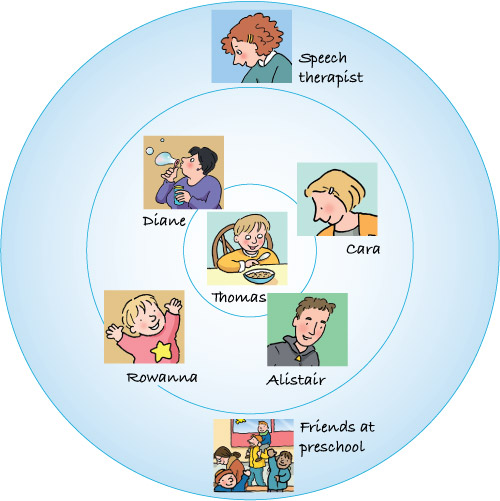1.1 Important relationships
Figure 3 shows one way of representing the range of different people that Tomos comes into contact with on a regular basis and how close they feel to him. Do you notice anything about the range of people mentioned? In this case study (but not in all families) family members are the closest. After that key workers in schools such as speech therapists might be the closest. As children develop, peers become of increasing importance.
Activity 2
Think back to your early childhood and try to remember whom you were close to when you were Tomos’s and Mali’s ages. Have a look at photographs from your early childhood or talk to relatives. If you prefer, carry out this activity from the perspective of your own children, or children you know well.
Produce a diagram similar to Figure 3 to provide a visual representation of the information or jot down some notes about the following, giving reasons for your answers if you can:
Who were you close to?
Are you still close to them now?
Comment
You may have been surprised by the range of people you identified as feeling close to, and forming a strong bond with. Maybe you identified aunts and uncles, grandparents, a step-parent, a foster carer or a non-relative who cared for you, such as a babysitter or a family friend.
For most young children, parents and immediate family are important. Other adults and children can be, too, but do not always get the credit they deserve for their parts in children’s lives.

